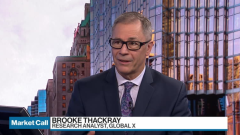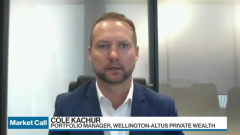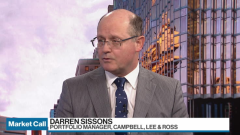Dec 13, 2022
US Inflation Relief Is Finally Happening, Putting Fed Pause in View
, Bloomberg News

(Bloomberg) -- US inflation data offered the strongest evidence yet that price pressures have peaked, cheering financial markets and putting a pause from the Federal Reserve’s interest-rate hikes in view.
Stocks and bonds rallied after the report as investors boosted bets that the Fed will pause its tightening cycle early next year. So-called core inflation — which excludes food and energy — rose just 0.2% in November, the smallest monthly advance since August 2021.
However, with annual headline inflation still running above 7%, it’s far too soon for the Fed to let off the gas on its rapid ascent in interest rates. Policymakers are widely expected to downshift to a 50-basis point hike Wednesday, but Chair Jerome Powell will likely communicate that rates will need to remain restrictive well into next year to further cool prices and get inflation back to target.
Assuming further moderation in inflation ahead, the November report “provides more confidence that the Fed may only need to tap the brakes lightly in the new year to cap this tightening cycle,” Sal Guatieri, senior economist at BMO Capital Markets, said in a note. “If so, it will go some ways to increasing the odds of a soft landing.”
In other words — cooling inflation without triggering a recession.
The half point move for this week was well-telegraphed before the CPI report. Traders are now leaning toward an even smaller 25-basis point increase for February’s Fed meeting. They also see a lower peak in the fed funds rate.
The report caps off a year in which inflation surged to 9.1%, the highest in 40 years, propelled by persistent mismatches in supply and demand and compounded by Russia’s war in Ukraine. Economists expect supply chains to continue to improve, while consumer spending and the labor market soften — which would ease the pressure on prices.
Some of the cooling last month came from energy prices, particularly gasoline and electricity. Medical care services dropped by the most ever on a monthly basis, and travel categories like airfares and hotel stays also declined.
However, Americans are still doling out a lot on groceries and housing. Food costs continue to rise on a monthly basis at a pace well above their pre-pandemic trend, and shelter was “by far” the largest contributor to the overall CPI, the Labor Department said in the report. Even though real-time measures show asking rents are cooling, it’ll still take some time to filter through to the government data, as renters renew their leases or move to a new place.
Once that happens, “then I think we can more convincingly say that the darkest age for inflation is behind us,” Guatieri said in an interview.
What Bloomberg Economics Says...
“The November CPI report was a second month of good news on inflation, and December’s report will likely bring a third. While we think it’s still unclear if non-shelter core services prices are slowing meaningfully, the string of soft reports should embolden the growing contingent inside and outside the Fed calling for a pause in rate hikes soon.
—Anna Wong and Eliza Winger, economists
To read the full note, click here
The Fed may be concerned by resurgent wages, which increased 0.5% in November from a month earlier but were still down 1.9% from a year ago, according to a separate report. Policymakers have emphasized the importance of the labor market, and earnings in particular, in determining the trajectory of inflation.
Higher wages can lead to higher consumer prices because businesses tend to pass at least part of the added expenses onto their clients.
“Even as core inflation slows due to easing supply chains and a normalizing mix of consumer demand, it is hard to imagine inflation returning to the central bank’s 2% target with nominal wage growth running at a 5% pace,” Wells Fargo & Co. economists Sarah House and Michael Pugliese said in a note.
More encouraging for officials is the slowdown in core services excluding shelter, a type of category that Powell stressed in determining the path of price pressures, though based on a separate gauge of inflation. While the drop in some categories like used cars and medical care may exaggerate the softness in core CPI, the overall direction still points to a more sustained deceleration — a trend many economists see extending into next year.
“This is not an outlier,” Omair Sharif, founder of Inflation Insights LLC, said in a note. “This looks like a fairly broad-based slowdown in core inflation.”
--With assistance from Reade Pickert and Vince Golle.
©2022 Bloomberg L.P.


